In December 2013, while traveling through northern Thailand, we had the option of visiting a hill tribe village. In Chiang Mai, nearly every tourist agency advertised these tours with photos of smiling indigenous women with unnaturally long necks wrapped in brass rings. Initially, the trip looked tempting, and we even considered it. But then we found out about the practice behind how these long necks are created. Girls start wearing neck rings at around five years old, and then more rings are added as they grow. As a result of wearing these rings, the girl's neck muscles become too weak to support the head, so the rings become a necessity and can't be taken off. The worst part—the practice was actually discontinued by the communities years ago and was only recently revived as a way to lure in tourists. Many travelers who took the tour described the experience as a “human zoo”. Trekking to a remote tribe for the sole purpose of taking a picture with women who had their bodies mutilated for tourists was not something we wanted to do, so we gave the experience a pass.
Six months later, as I visited an indigenous group in Panama, I confirmed what I already knew—visiting indigenous tribes can be a disappointing and not terribly authentic experience.
But how and why did I end up in an indigenous village in Panama?
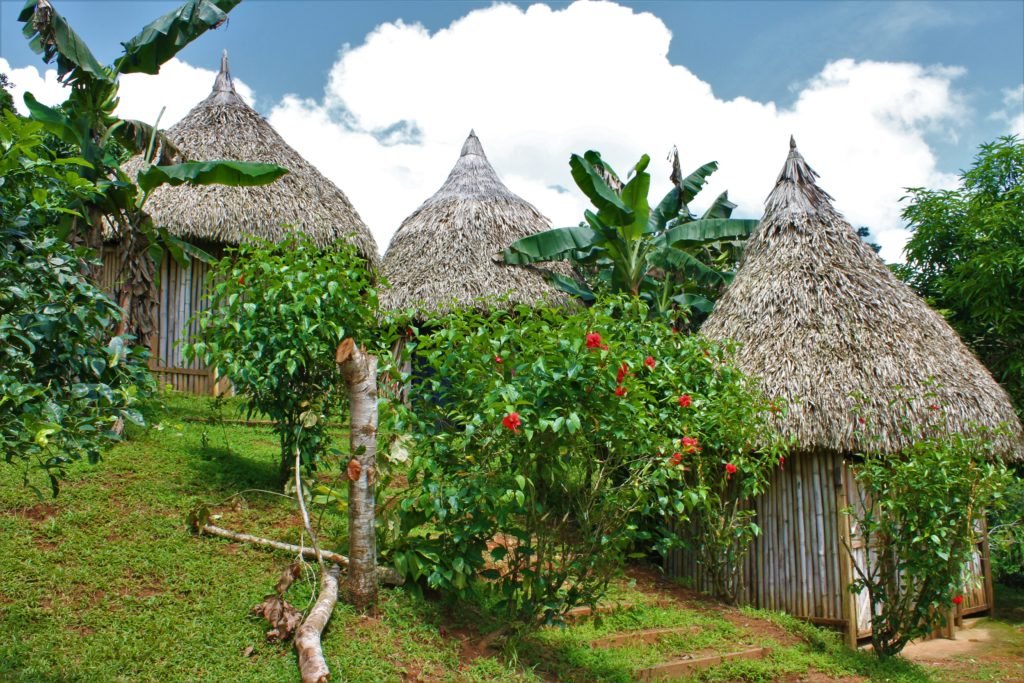
In May 2014, I traveled to Panama City on a solo trip and had four days to spend there. After exploring the Old Town (Casco Viejo) and the Panama Canal and eating as much ceviche as I could possibly handle, I realized I had enough time for a day trip. I had no pre-arranged plans and had to improvise. What I quickly learned was that travel in Panama was ridiculously expensive. For example, a day trip to nearby colonial ruins was quoted at $250. I'm still puzzled about who Panama's tourism is actually geared toward: tourists from cruise ships with limited time ashore and wads of disposable cash, or those moneybags who hide their assets in Panama, but travel on a budget was turning into an impossible task.
Researching my options, I came across a website offering a tour to the local indigenous tribe called the Embera. The $140 price tag was still high by my backpackers’ standards, but my main concern was about visiting a “tribe”. The last thing I wanted was to end up in a “human zoo,” something that we successfully avoided six months earlier.
The Embera people are an aboriginal and semi-nomadic tribe of approximately 80,000 living mainly in Panama and Colombia. Unlike tribes in northern Thailand, they don't have visible body mutilations, but they are one of the few remaining tribes in the world that still practice female genital mutilation. Did I really want to go there? With no other day trip options available, I decided to give it a try.
The following morning, I was picked up from my hostel in the Old Town. After collecting the payment, the guide informed me that the remote Embera village, where the tour was originally planned to go, wasn't open, and instead, we were going to a village that was just 40 minutes from Panama City. Seeing my money disappearing into the guide’s pocket, I questioned him about this sudden change of plans, but the guide reassured me that visiting the tribe near the capital was a better option:
"You don't want to go to a remote village. Those villages are boring. People don't wear traditional clothes and will not do traditional dances. Kids wear Chicago Bulls jerseys! Trust me, this nearby village is better."
Somehow, I wasn't very convinced. If Embera people in remote areas don't wear traditional clothes, why would they do so near the capital? Do they have access to the materials that those remote settlements don't have? Or is it because the village is there to entertain tourists?
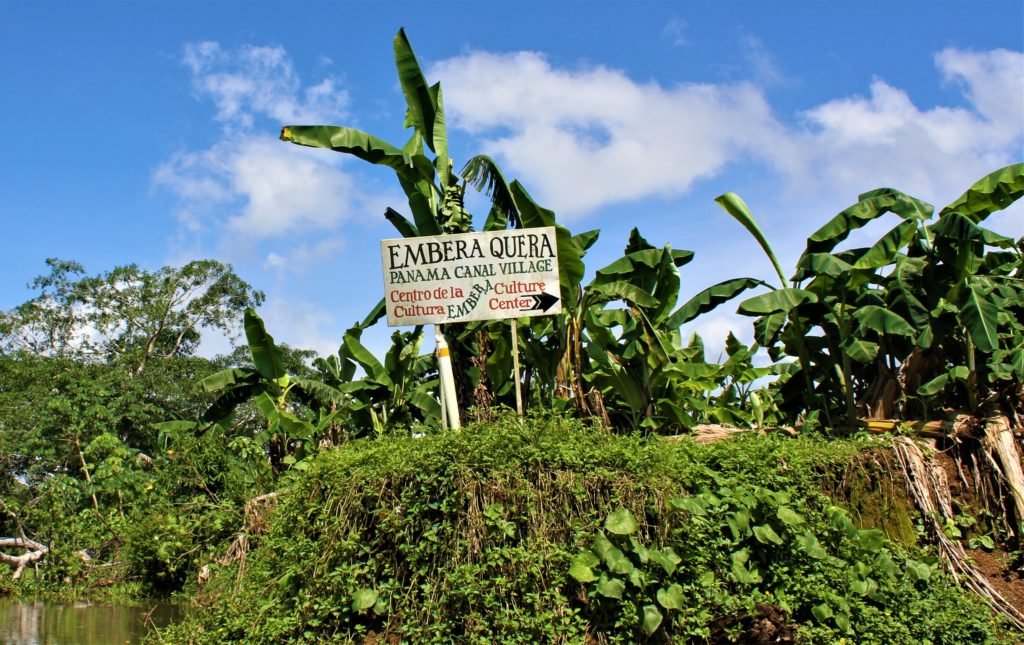
On the way out of the city, we picked up additional tourists (all from the U.S.). Leaving Panama City with its never-ending forest of skyscrapers, we rode in the countryside for about half an hour until our minibus stopped by the river.
“We're here!” the guide cheerfully announced.
It was difficult to imagine that an indigenous group was nearby. The busy highway with its speeding and thundering trucks was roaring right behind us. We boarded a dugout canoe parked by the riverbank, and 15 minutes later arrived at the Embera Quera village.
Disembarking at the pier, we saw the locals gathered near the entrance to the village to greet us. Women, dressed in traditional bright clothes, were doing a welcoming dance. The men, all naked with only colorful bead tunics covering their private parts, lined up on the other side, playing local musical instruments.
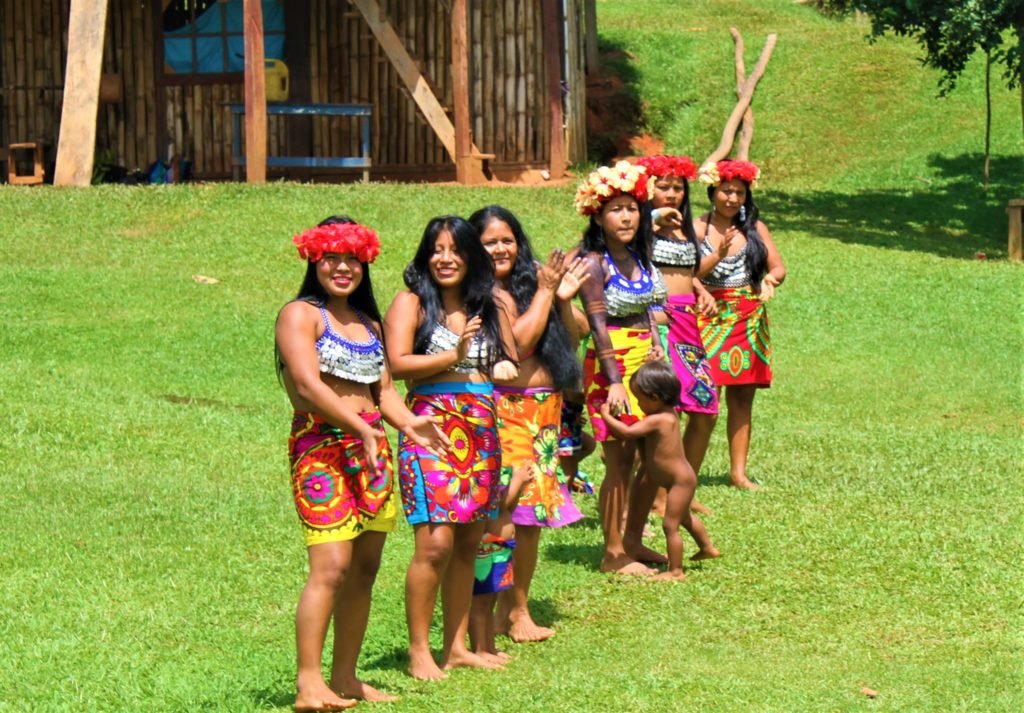
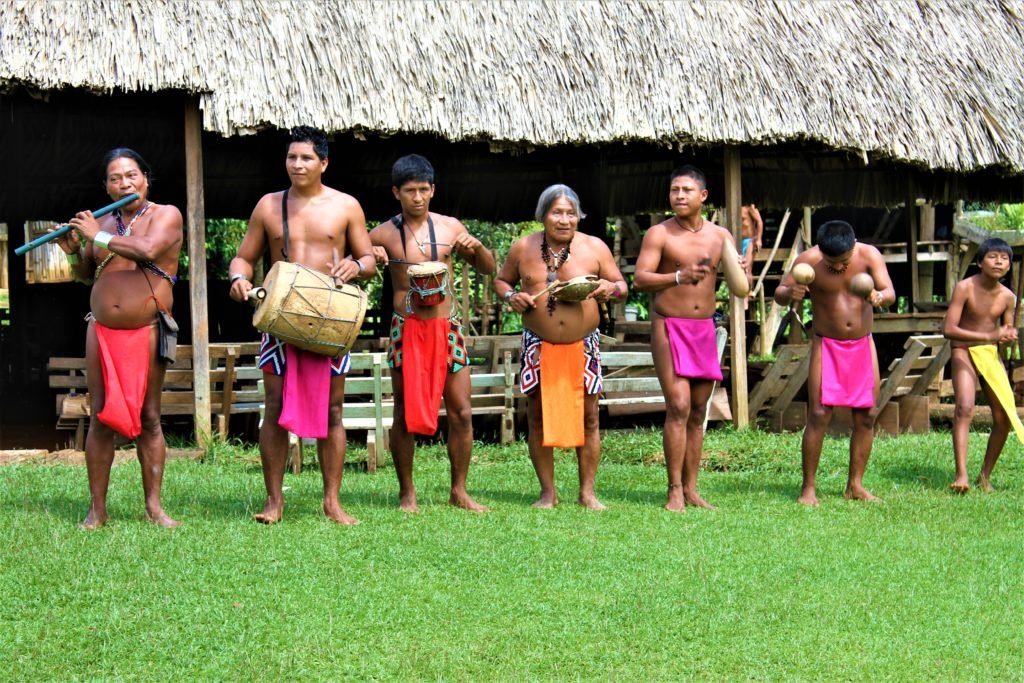
After greeting the guests, the chief, as he introduced himself to us, took us around. On this walking tour, he gave us a short presentation on the tribe, the village, and the way of life of the Embera people. The village was a collection of a dozen palm-thatched huts. It looked like a set where you would shoot a movie about indigenous people, but not as a place where people actually live. And as we followed the chief, we saw people doing engagement and pregnancy photo sessions. If there was any magic in visiting the tribe, it was ruined when a phone rang, and the chief pulled out of his bead tunic a cellphone. He spoke fast in a melodic local tongue, probably arranging for the next batch of tourists to be brought in.
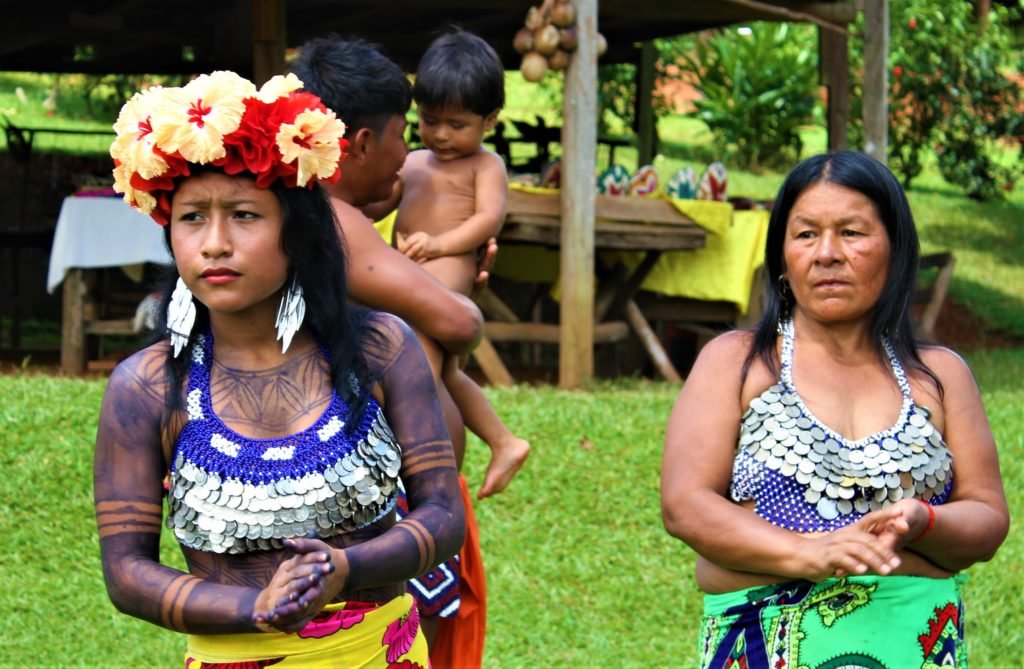

When the walking tour ended, we were served lunch and encouraged to buy souvenirs from a souvenir stall. The visit was capped by locals doing traditional dances and inviting tourists to join in. All of this was way too touristy for my taste, but I couldn't say “no” to a young Embera girl covered in tribal tattoos from toe to head when she asked me for a dance.
I wouldn't say that the trip was a complete waste. I quickly made my peace, resigning myself to the thought that at least part of my money would go to support the Embera people. Although the experience wasn't exactly authentic, I nevertheless tried to enjoy it and have fun as much as I could. I chased local kids, who seemed just as fascinated by me as I was by them. Then I was chased by another resident, a pet toucan. The colorful bird, with its oversized beak, followed me around and even managed to painfully peck me on the leg several times. And in the end, our group had a collective laugh when, on the way back to the minibus, our enthusiastic guide fell asleep in the canoe and nearly plunged into the muddy Gatun River.


In the end, it was a lesson well learned. A slightly expensive lesson, but a good one—humans are not meant to be exhibited in a tourist zoo, and treating them as such devalues the way we see indigenous tribes and the way they view us. I prefer walking dusty streets and peeking into alleys, yards, and open windows for a quick glimpse of community life, meeting locals in parks and striking up conversations on the streets, taking an unplanned detour into a tiny rural village, and getting to know the inhabitants. I would rather be a casual observer, rather than an audience member with a front-row ticket demanding to be entertained. I might experience less, but I would see a hint of the genuine thing rather than carefully curated replicas.


Hello, Victor.
I just read your post “A travelers dilemma: the human zoo.” Thank you! Very informative.
In a couple months, I am doing a YouTube series about driving from the US-Mexico border to Yavisa, Panama. Being familiar with the Embera tribe in the Darien Gap, I had planned to end my video in Yavisa (at the bridge that enters the Darien) where I would explain what lay beyond that bridge, why the road stops in Yavisa and, of course, the Embera tribe.
While researching the Embera tribe, I kept finding videos of a tribal village with well groomed grass, everyone clad in bright colors and crowns of pretty flowers. It was exactly like you described in your post. I was shocked. “Maybe the Darien Gap isn’t as dangerous as I’ve been told! Look! Hoards of tourists are going there everyday and they’re not getting lost in the jungle or executed by para-military groups or drug traffickers!” I didn’t realize these were videos of a village near Panama City, one specifically created for the almighty tourist dollar.
Now that I know this, I am considering an alternative end to this YouTube series. I will stop at the tourist village near Panama then, when I get to Yavisa, I will arrange to go see a REAL Embera village.
Like you, I’d rather see an Embera wearing a Chicago Bulls jersey, living his normal life, than a “carefully curated replica.”
If I am able to arrange a trip to see where and how the Embera live in the Darien, I will conclude this series by highlighting exactly what you expressed here: the human zoo. I would love your permission to read a small portion of this post in my YouTube video. (Naturally, I’ll give you a shoutout.)
I hope this message finds you well!
From one backpacker to another.
David
Hi David! A road trip through Latin America is a dream of mine and one day I hope to plan one as well. You can definitely use any portion of my post for your series and I would love to watch it, so please let me know the name of your Youtube channel. Glad you found my post informative and I hope you have a safe and fun trip!